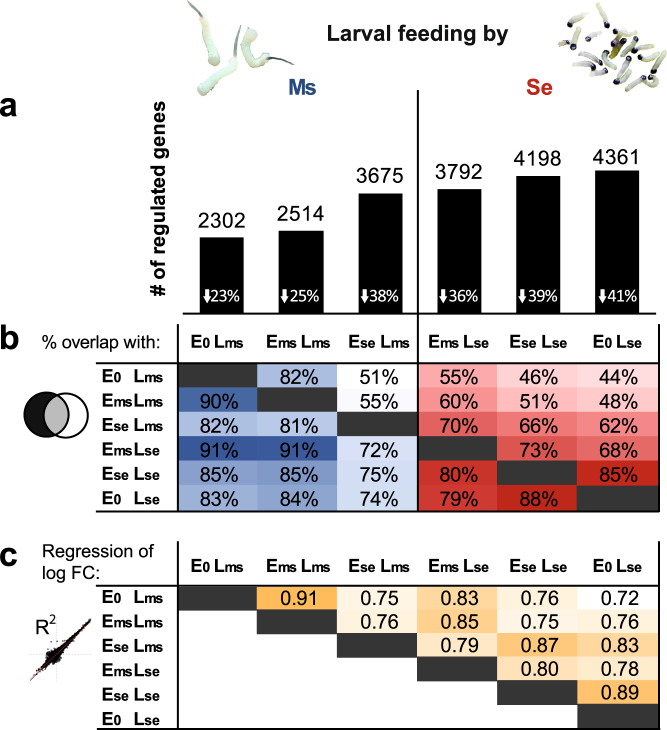Figure 4.
Oviposition by the other species shifted the transcriptional response to feeding by M. sexta and S. exigua larvae in-between the species-specific plant responses to their herbivory. (a) Bars represent the numbers of genes (given above) differentially regulated relative to control plants (FDR-adjusted P < 0.05, log2-fold change >1) in all feeding-induced plant treatments. The white numbers in the bars display the proportion of down-regulated genes. The plants had experienced egg deposition (E) by M. sexta (Ms), S. exigua (Se), or none before they were fed by neonate larvae (L) of either of the two species for 24 hours. (b) Matrix of the proportions of gene sets similarly regulated by the different feeding-induced treatments: For each treatment designated on top of a column, the proportion of genes that are also regulated by another treatment (designated in front of a row) is given. (c) Matrix of the regression coefficients of pairwise correlations between log2-FC in gene expression (compared to control plants) among all feeding-induced treatments.

